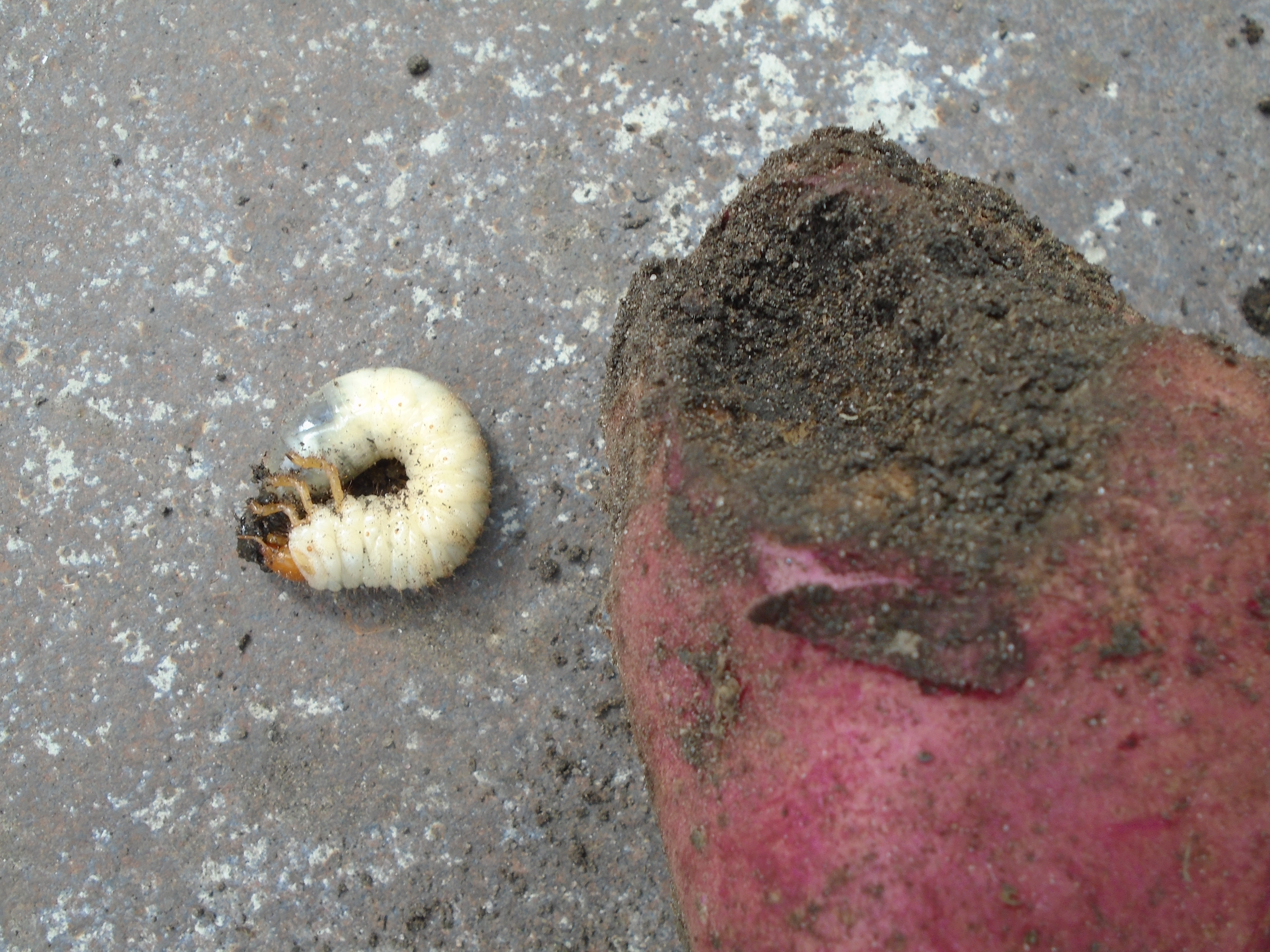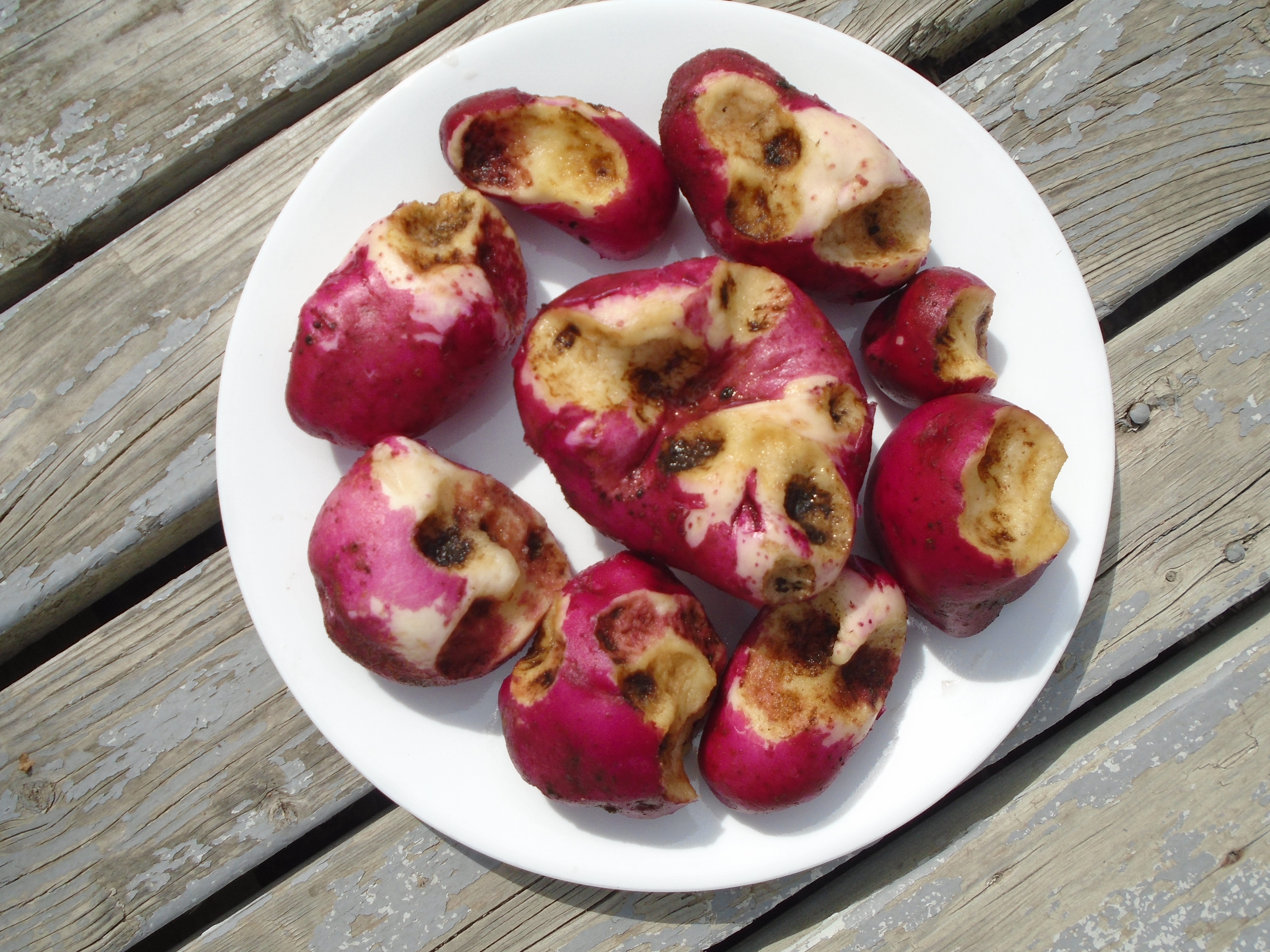
June beetle grubs
damaging

The common June beetle (Phyllophaga spp.) grubs (larvae) can do some damage to potatoes and carrots. Infestations in vegetable gardens are more likely in newly dug gardens that were previously grass or pasture. These grubs can also be a problem in lawns as the fibrous root systems of grasses are their preferred food source.
The beetle takes three years to complete its life cycle. June beetle adults are nocturnal and remain in the soil during the day. The damage to both vegetable gardens and lawns is most severe in the second year when the grubs mature. They prefer to feed on the roots of grasses, but will feed on potatoes and sometimes other vegetables.
There are natural predators of June beetle grubs including insect parasites and predators, nematodes, bacteria, fungi, viruses, birds, small mammals and toads.
Symptoms in potatoes:
- The top portion of potato plants may exhibit wilting or dwarfing caused by larvae feeding on potato tubers.
- Tubers have deep tunnels. (See photo)
Control in the vegetable garden:
- Avoid planting potatoes in newly dug gardens that were previously grass or pasture.
- If you have planted in a new garden, check plants for signs of wilt or dwarfing. Pull a plant and examine the tubers for grubs or signs of tunneling. If found, harvest your potatoes soon in order to salvage what you can from your current crop.
- Till the soil after harvest to pulverize the grubs and some of the beetles and expose the eggs to cold and predators. Note that larvae and grubs live very deep in the soil, so tilling won't get rid of all of them.
- Till again in early spring.
- Next year, rotate where you grow your potatoes – choose an older, established spot in the garden.
- Do not plant potatoes or other root crops in the area again for at least three years.
Symptoms in lawns:
- Feeding on grass roots will cause lawn to wilt and turn brown.
- Affected areas may be soft and spongy and it may be easy to lift the dead patches of turf. Lift the dead patches to examine the soil for signs of grubs near the surface. If you find 8 - 10 grubs per square foot, the infestation is severe. However, a healthy lawn can tolerate minor infestations of the grubs (5 or less).
- Sometimes animals such as birds, skunks or other mammals pick at the lawn to feed on the grubs.
- Damage tends to be worse during wet periods in early spring or fall.
Control in the lawn:
- Handpick grubs as you find them.
- Scout for mature June beetles at dawn or dusk as they are nocturnal. Vacuuming them up is a good way to catch them.
- Stressed lawns are more prone to June beetle grubs. Lawns that have thick thatch, are mowed too short or are watered too often are more prone to these grubs. Remove thatch that is thicker than 2 cm (3/4"). Set your lawn mower blade higher to avoid shearing the lawn. Water deeply but infrequently to encourage deep root growth: 2.5 cm (1") of water every 7 - 10 days.
- See our brochure for best lawn care practices: Healthy Yards: Lawns
- Re-seed damaged areas.
Sources:
Howard, R. J., Seaman, W. L., & Garland, J. A. (Eds.). (2002). Diseases and pests of vegetable crops in Canada. Vancouver, British Columbia: The Canadian Phytopathological Society and the Entomological Society of Canada.
https://www.omafra.gov.on.ca/IPM/english/potatoes/insects/whitegrub.html#advanced

